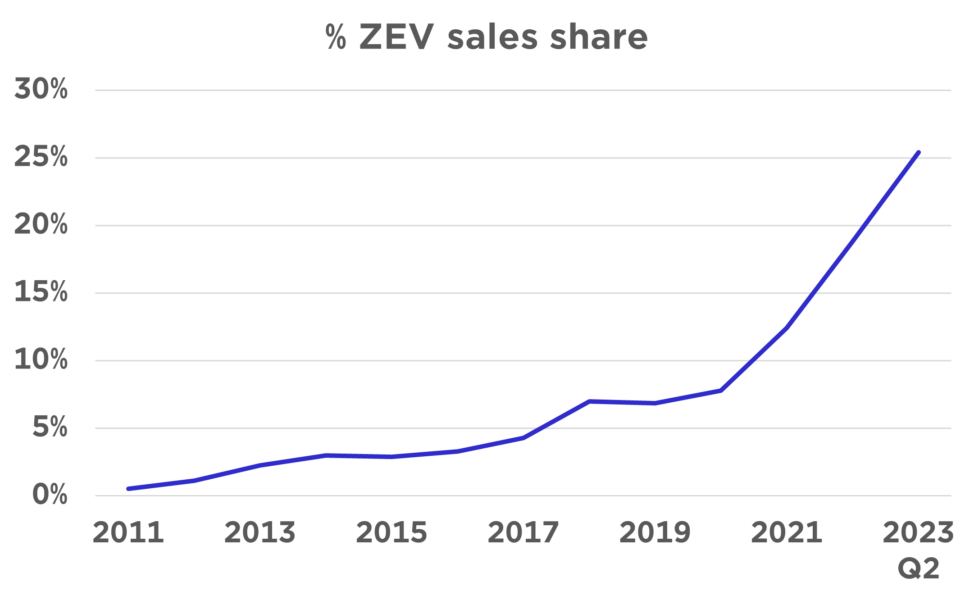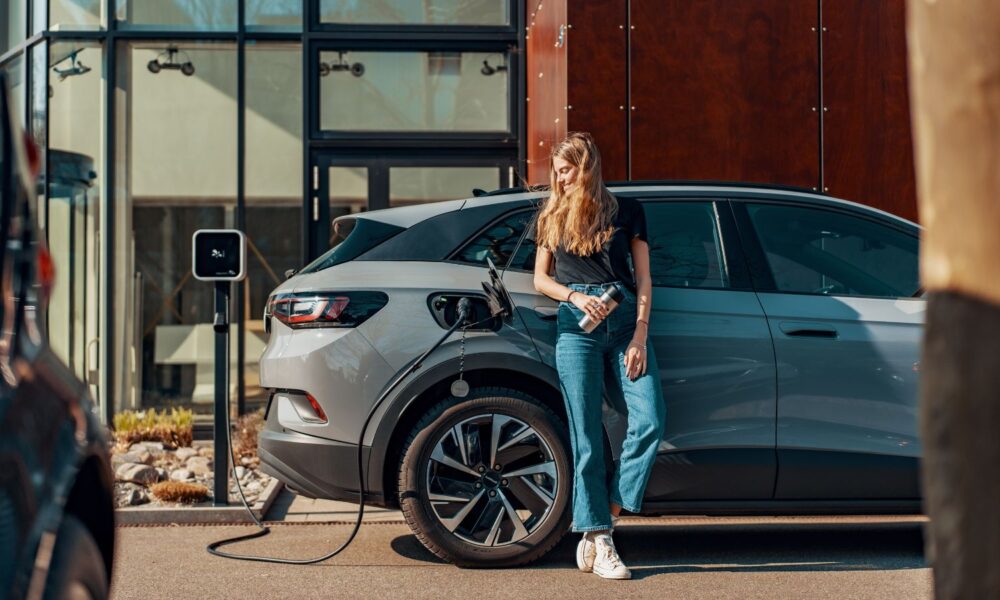The latest new car sales numbers are in, and California has hit a new milestone on the path to electrification: 1 in 4 new cars sold in California in the second quarter of 2023 were plug-in electric cars and trucks.
Another sign of the rapid changes occurring is that for the first time Tesla was the top selling brand in California, edging out Toyota for the top spot. The Tesla Model Y was also the top-selling model of car or truck in California, more than doubling the sales of the best-selling gasoline car (Toyota Camry) and truck/SUV (Toyota RAV4).

While the overall statewide sales of electric vehicles is impressive, the San Francisco-Oakland Bay Area region is moving even quicker to electric cars and trucks.
During the second quarter of 2023, more than 40% of new car sales in Alameda, Santa Clara, and San Francisco counties were plug-in electrics.
Four big developments to watch
Electric vehicle sales hitting 25% is a big deal, but we need to accelerate the switch from gasoline to electricity to help limit climate change and reduce air pollution. Here are four things I’m watching that are important to reducing emissions as soon as possible:
- Availability of lower priced electric vehicle options
The Chevy Bolt EV and EUV models were 8% of battery-electric vehicle sales, and third place in the small car segment. Despite the sales, this affordable electric option is being discontinued. However, GM has recently announced that it plans on bringing back the Bolt EV, albeit at an unannounced time in the future. Will GM bring the Bolt back in time to meet the demand for lower-priced electric vehicles? Or will new models like the Volvo EX30 get to market in volume first? Electric vehicles at lower price points are important to ensure that zero-emission cars and trucks are accessible to more households. - Automaker investment in a single charging standard
Tesla’s lead in sales is in part due to the fast charging network it has built. Does the rapid coalescence around Tesla’s fast charging standard (NACS) make up for traditional automakers largely ignoring charging infrastructure? Is the announcement by General Motors, BMW, Honda, Hyundai, Kia, Mercedes, and Stellantis that they will invest billions into US fast charging infrastructure going to give more buyers confidence that an electric vehicle can meet their mobility needs? Making public charging seamless and widely-available is critical to the continuing to grow electric vehicle sales and these developments are pointing in the right direction.
- Gasoline-vehicle holdouts
While many traditional automakers are rolling out multiple electric vehicle options, some of the biggest-selling brands in California continue to lag behind. For example, Honda (and its Acura luxury brand) currently has no plug-in vehicles for sale. Will the growing demand for electric vehicles finally push lagging automakers to catch up? Car buyers consider many factors when making a vehicle purchase and some have loyalty to particular brands and models. The more electric models out there from different manufacturers, the higher the likelihood that the brand and type of vehicle you want will be available with an electric drive train. - Electric vehicle startups besides Tesla
While Tesla led all brands in new car sales for the second quarter with 14.6% of all cars and trucks sold, only 10 years ago it had only 0.5% of the market in California. Start-up electric truck and SUV maker Rivian now has similar sales to where Tesla was 10 years ago with 0.5% sales in the second quarter of 2023. Will they scale up like Tesla did? Are there other new electric-only automakers like VinFast or Fisker that can push automakers that are still focusing mostly on gasoline cars and trucks? Tesla was the first successful new U.S. automaker in decades and has shaken up the industry. Other new upstarts could put even more pressure on the traditional automakers to step up their efforts and some healthy competition could benefit consumers in terms of more electric vehicle choices and increased affordability.
We’re on track to meet 100% zero-emission vehicle sales goal
To meet climate and air quality goals, we need to quickly reduce emissions. And since transportation is the largest single source of emissions in both California and the US, switching to zero-emission vehicles is a necessary step.
Not driving by walking, biking, or using public transit is the best (and cheapest) option to reducing vehicle emissions, but for people who need passenger vehicles for their mobility needs, electric vehicles are the best way to cut emissions from personal vehicles.
While we’ll need all automakers to produce and sell more electric vehicles and for continued public and private investments in infrastructure, we’re on the right track in California to eliminate sales of gasoline passenger vehicles by 2035.

